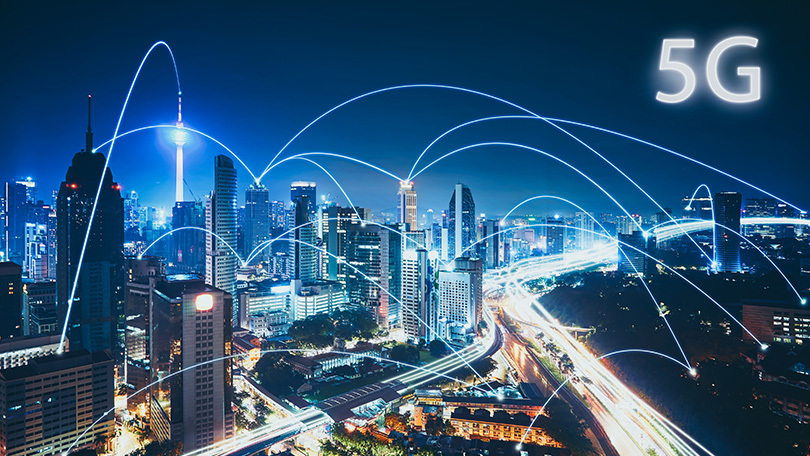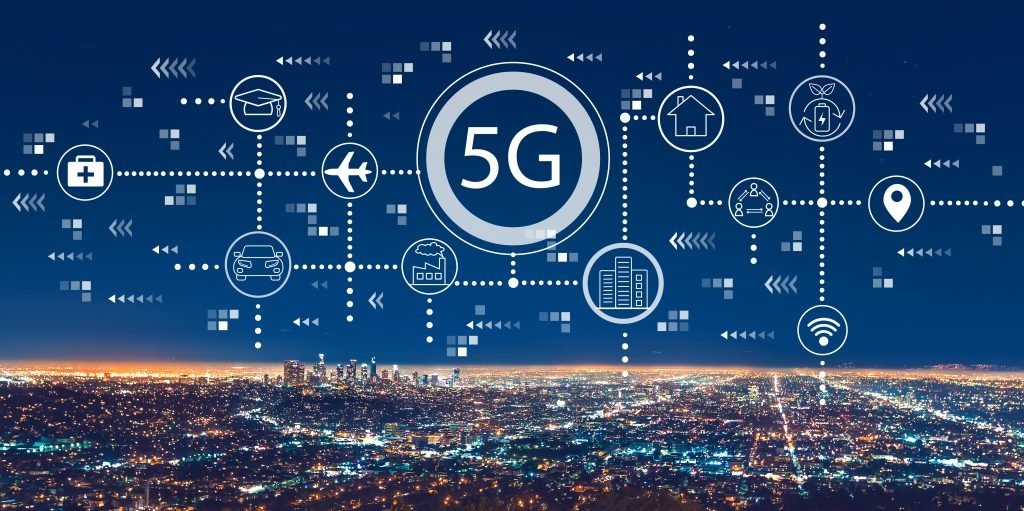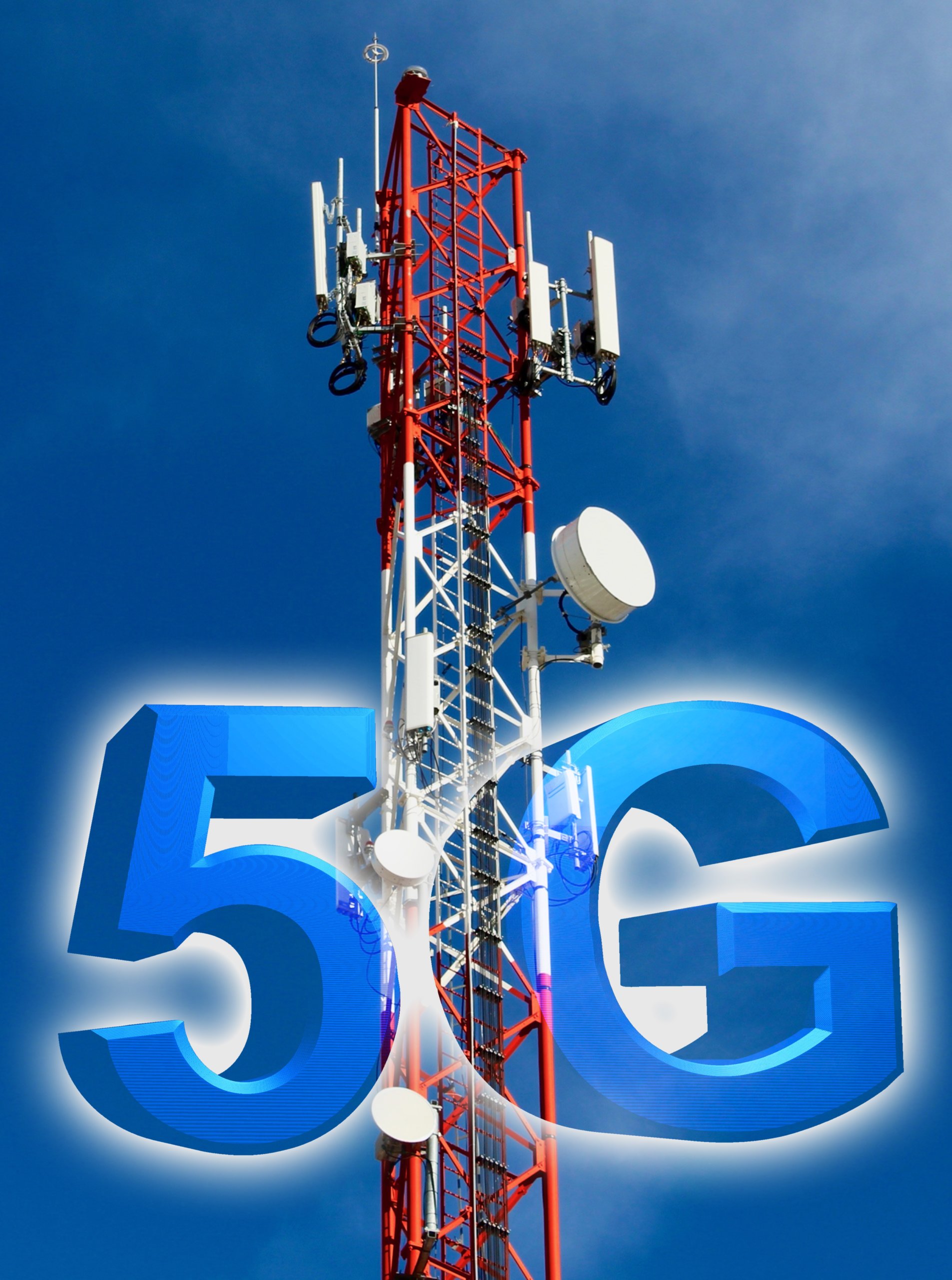
Welcome back to our second (and final) post about 5G’s impact on the Internet of Things (IoT) and tech in general!
In a recent survey, Jabil asked 204 stakeholders directly involved with 5G network implementation about what the near future looks like with this disruptive technology. In the first post of this series, we covered their thoughts on when 5G will become mainstream, which regions of the world will lead the charge, and how business applications will fuel its growth. In case you missed it, you can read it here.
In this post, we’ll take a look at the main drivers behind 5G, why it will change telecommunications as we know it, and the challenges impeding its adoption. Ready to get started? Let’s go!
Smart Cities and Industrial IoT Will Drive 5G
Over the next couple of years, survey respondents expect two things to drive widespread 5G adoption: faster, better video streaming and industrial IoT development. However, when looking out further down the timeline, roughly 50% of respondents believe that smart cities will be the dominating driver of 5G, followed 10% of respondents placing their bets on connected vehicles.

Emanuele Cavallaro, Jabil’s Senior Vice President of Access Communications, believes the difference in short- and long-term drivers can be attributed to the amount of structure needed for each. Essentially, both video and IIoT will require some slight tweaks to tap into 5G’s potential. But smart cities and connected vehicles (both of which are still in conceptual phases to some degree) will require more drastic industrial shifts to implement 5G.
How 5G Will Unlock New Business Value
So far, we’ve covered some potential uses and prime industries for 5G. But what exactly are the main reasons 5G will be adopted? According to 95% of Jabil’s survey participants, 5G technology will unlock new business models. 89% of respondents think 5G will open up opportunities for new telecommunication companies to rise.
The arrival of 5G will allow organizations to create new value chains and open up new revenue possibilities via the further digitalization of practically all industries. As a result, telecom companies will have more options for new services, income streams, and ecosystems than ever before.
Moreover, companies will be able to become nuanced in the services they offer by targeting different economic or industrial groups. This means 5G could completely disrupt the current telecom business models which are standardized with variations in pricing plans.
88% of survey respondents also believe that 5G capabilities will enable the next “killer app” to arise. But while researchers are already racing with ideas about how 5G can fuel artificial intelligence (AI), virtual reality (VR), and augmented reality (AR), nobody really knows what this application will be.
Part of the reason why this is so difficult to predict is due to 5G itself. Previous wireless generations were geared towards solving a specific need. But 5G isn’t directed toward a specific application demand; it’s coming to meet a general demand for more bandwidth and better efficiency.
The Obstacles in the Way of 5G
With all of the potential and benefits it houses, 5G seems like an inevitability. But implementing this new technology across the world unsurprisingly comes with its fair share of challenges. 41% of survey respondents believe that the biggest obstacles to adoption lie in the technology itself.
Per 53% of participants, the sheer complexity of 5G will be the greatest technological challenge to overcome. Ideally, 5G will eventually provide gigabit-speed mobile service and wireless fixed broadband through new spectrum bands and radio access types. All of this should result in the formation of a single 5G network. But today’s systems and protocols cannot support the level of service needed to make this happen.
After the complexity of 5G itself, the second-highest technological problem according to 49% of respondents is the availability (or lack) of spectrum. Regulatory agencies are currently opening up parts of the spectrum in the millimeter wave region, but the industry hasn’t quite caught up to this — you can’t exactly go buy a 39-gigahertz phone right now that you can safely press to your head. Besides this, the millimeter wave isn’t cost-effective or ubiquitous yet.

63% of survey participants also see the lack of 5G-enabled devices as a tough issue facing adoption. But major companies and manufacturers are already beginning to produce 5G-capable phones. As we approach the widespread arrival of 5G, more companies will most likely follow suit.
All of these obstacles add up to an insurmountable challenge when tackled alone. That’s why 99% of respondents think additional resources and expertise from partners and suppliers will be needed to overcome these impediments. Respondents believe that interoperability standardization (a common issue for the IoT market) and cost-effective equipment will be the main barriers necessitating teamwork.
Are You Ready for a Future With 5G?
Perhaps the most interesting insight from Jabil’s survey is the fact that experts are completely split about what the future with 5G looks like. It’s unanimously agreed that 5G will provide value, but just how much is the question. 51% of respondents think 5G will bring incremental improvements over 4G, while 49% believe 5G will rapidly and drastically transform telecommunications and technology.
Both sides of this argument bring valid viewpoints. 5G will undoubtedly transform numerous industries with its capabilities. But it isn’t replacing other paradigms like 4G because they are all part of an evolutionary cycle. 5G will open up new opportunities for innovators, but they will have to seize those in a way that works in tandem with previous wireless generations.
What do you think the near future looks like with 5G? Do you think its adoption will be slow? Or do you think it will be ubiquitous from San Francisco to New York City in no time? Let us know your thoughts in the comments!





